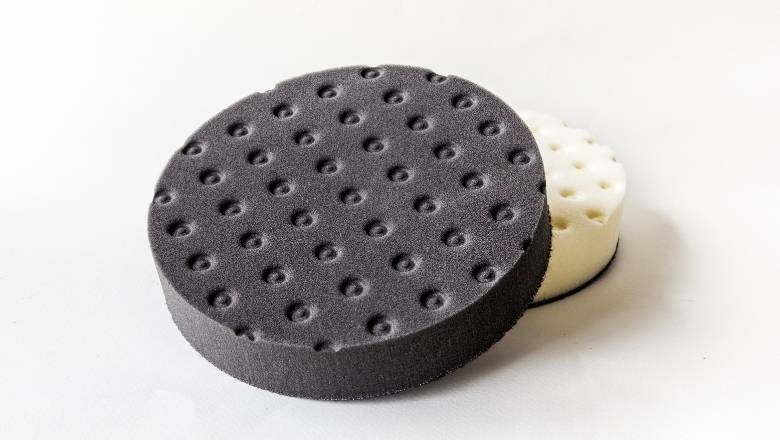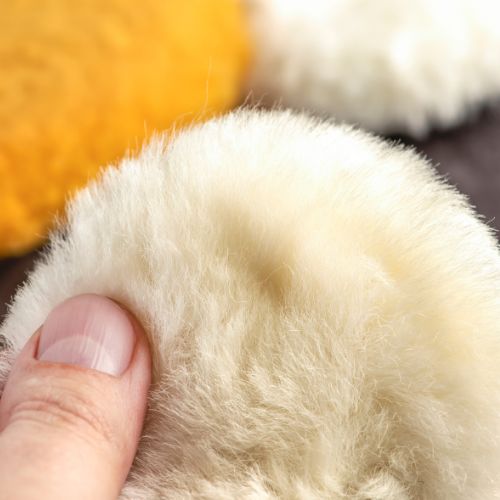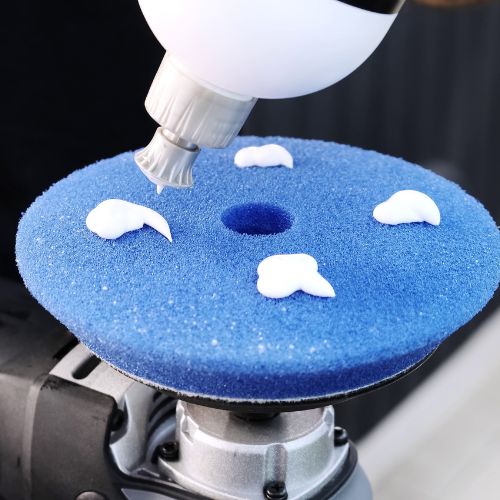How to Choose Buffing Pads: A Beginner’s Guide
Car Detailing Planet is a part of Amazon Associates. As an Amazon Associate, we earn from qualifying purchases. Read our Affiliate Disclosure to learn more.

Choosing the right buffing pad when polishing your car is extremely important if you want the best paint correction results. I had problems with choosing proper buffing pads when I just started detailing cars, and now that I’m experienced, I decided to write this guide and show you what buffing pad to use in which circumstances.
Key Takeaways:
- For heavy-cutting (extremely scratched and defective paint), I recommend using wool or microfiber buffing pads.
- For medium-cutting paint correction, I recommend using microfiber or abrasive foam polishing pads.
- For finer polishing (removing light oxidation, swirl marks, light scratches, etc.), I recommend using foam pads.
- Foam pads are the most versatile type of polishing pads, and with them, you can fix most paint defects.
- The typical size of buffing pads is 5″, and it suits most auto detailing tasks, but opt for a larger one or a smaller one depending on the car part you’re polishing. Always have multiple sizes in storage.
Types of Polishing Pads
Before we dive into the guide on choosing buffing pads, you need to first understand the main types of buffing pads.

Wool Pads
Wool pads are made from either natural wool or a synthetic blend. They stand out for their ability to transfer heat quickly, especially during intense compounding tasks. This characteristic is crucial for professionals like me who need efficient and effective tools. Additionally, when it comes to longevity, wool pads tend to outperform both microfiber and foam pads, making them a durable choice in the world of buffing.

Foam Pads
Foam pads are arguably the most popular choice in the buffing world, and for good reason. Made primarily from foam, these pads come in a variety of grades, each indicating a different level of abrasiveness. This range allows for tailored polishing, from gentle buffing to more aggressive correction. Foam pads are usually categorized in colors, with each color representing a different level of abrasiveness.

Microfiber Pads
Microfiber buffing pads have carved a niche for themselves in the polishing realm, and it’s easy to see why. Made from high-quality microfiber, these pads boast numerous fine hairs that excel in product absorption. This characteristic makes them particularly adept at cutting, much like their wool counterparts.
How To Choose Buffing Pad For Each Task?
Choosing the right buffing pad is crucial for achieving the desired finish, and in the sections that follow, I’ll guide you through various factors to help you make the best choice for each task.
Determine The Level of Correction Needed
Before diving into the polishing process, it’s essential to first assess the condition of your car’s paint. Start by examining the types of scratches present.
For those deep, glaring scratches on severely neglected paint, I’d typically begin with wool or microfiber pads to achieve optimal results.
On the other hand, if you’re dealing with lighter imperfections like swirl marks, foam pads are your best bet right off the bat.
The Type of Compound/Polish You’ll Use
Pairing the right pad with the appropriate polish or compound is vital. It’s a misstep to use a cutting polish or compound with a minimally abrasive pad.
Typically, polish pastes designed for cutting are best matched with microfiber or wool pads or even with highly abrasive foam pads.
As you transition to milder polish products, I recommend opting for less abrasive pads, which are predominantly foam pads in nature.
The Type of Machine You Use
The machine you choose plays a pivotal role in the polishing process, and its compatibility with different pads is something every detailer should be aware of.
For those wielding a DA polisher, both microfiber and foam pads are excellent choices, delivering commendable results. On the flip side, if you’re operating a rotary polisher, wool pads are your best bet for intensive cutting tasks.
A word of caution for the novices: rotary polishers can be tricky. In inexperienced hands, there’s a risk of burning through the clear coat, so tread carefully.
So, for rotary polishers, microfiber and wool pads are top picks (though foam pads can also fit the bill). Meanwhile, DA polishers pair seamlessly with foam pads, and when heavy cutting is the order of the day, microfiber pads step up to the plate.
Related: Best Polishers For Car Detailing
Choosing the Right Pad Size for the Job
The size of the surface you’re polishing often dictates the size of the buffing pad you should use. The market offers a range of diameters, from compact 3″ pads to expansive 7″+ options.
For most detailing tasks, a 5″ buffing pad strikes a good balance. However, based on my experience, it’s wise to keep an assortment of pad sizes on hand to tackle any job.
For expansive areas like hoods, roofs, or doors, larger buffing pads are the way to go. However, based on my experience, it’s wise to keep an assortment of pad sizes on hand to tackle any job.
When working on intricate areas like door handles or car interiors, smaller 3″ buffing pads prove invaluable. They allow for precision and ease of maneuverability.
But remember, it’s a balancing act. While a large pad can speed up the process, it might be unwieldy and miss spots. Conversely, a pad that’s too small can be time-consuming and may result in uneven polishing. Always aim for the sweet spot between efficiency and desired outcomes.
Each Situation Requires a Different Approach
Experience in the detailing world has taught me one crucial lesson: no two cars are the same. Each vehicle presents its own unique challenges, and there’s no one-size-fits-all solution. The choice of pad, compound, and even the polishing machine can vary based on numerous factors.
Take, for example, German luxury cars. Their clear coats are notoriously hard, demanding a more abrasive approach than what a foam pad can offer. This is especially true for Italian sports cars like Ferrari and Lamborghini.
That’s why I can’t stress enough the importance of practice. Before diving into a full detailing job, always test your methods on spare parts or less conspicuous areas of the car. This ensures you’re using the right approach for that specific vehicle.
A piece of advice I’ve always stood by: start with a less abrasive product than you think you might need. If it doesn’t do the trick, you can always step up the abrasiveness. But if you go in too aggressively from the outset, you risk removing too much clear coat and potentially damaging the paint. Always err on the side of caution.
Infographic on Choosing The Right Buffing Pads
Here’s a simple infographic that I made so you can easily see which buffing pad you should use.

Conclusion
And that’s it, guys! Again, as you gain more experience in paint correction, you’ll more easily determine the right buffing pad for a specific job. Just make sure to clean buffing pads after each use, so they last you longer.
